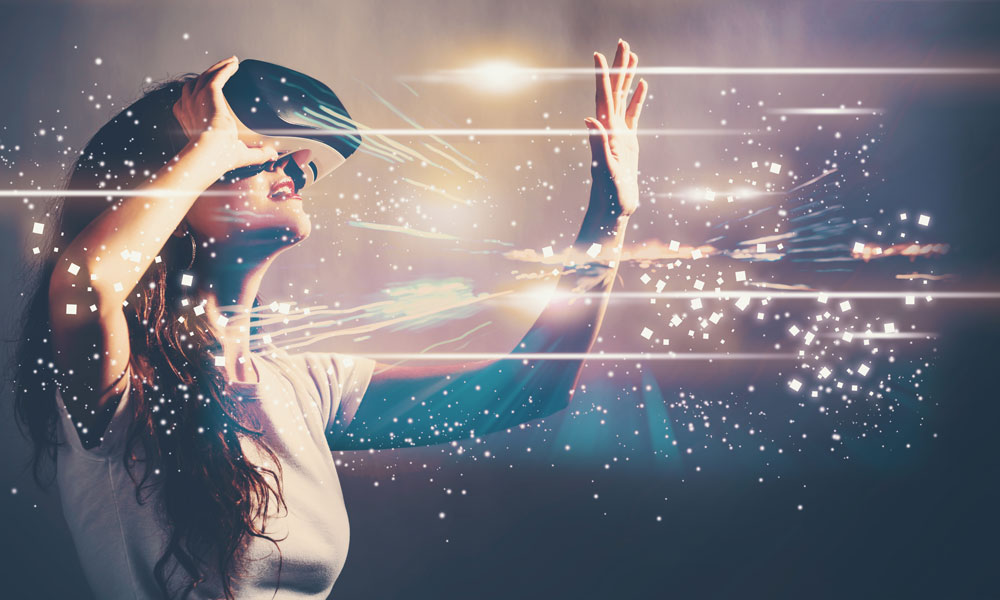Apple’s Premium AR Headset Will Arrive Early Next Year with LiDAR
 Credit: TierneyMJ / Shutterstock
Credit: TierneyMJ / Shutterstock
Toggle Dark Mode
While we’re still going to have to wait a few more years for the Apple Car, it seems there’s one other major Apple innovation that’s much nearer on the horizon — the long-rumoured Apple AR/VR headset.
By all reports Apple’s augmented reality ambitions have travelled a long road, with several detours and even false starts as to exactly what the final product would be, and it wasn’t until late 2019 that the wearable headset and glasses project finally began to take shape, with Apple’s project leadership laying out a 2022–2023 timeline for the product lineup, which would lead with an Oculus-style AR/VR headset, followed later by a more ambitious “Apple Glass” style product.
Despite some pretty crazy rumours last spring, there’s generally been a census among industry watchers that the 2022 timeline is pretty solid, although reliable Apple analyst Ming-Chi Kuo, who had been fairly steadfast on the longer timeline, offered up a hint last month that Apple could actually have some kind of enhanced reality device ready for release later this year.
Now a new report from JP Morgan is suggesting that the first version of Apple’s AR headset will arrive early next year, while adding a few more interesting details as to exactly what it may look like.
LiDAR On Board
The analysis, which was first spotted by iMore, comes from China Times (Google Translate), and suggests that Apple doesn’t plan to get too wild with the design of its first headset, suggesting that it “will be close to that of other brands,” although we’ve heard other reports that suggest that Apple is at least doing everything it can to make it at least a bit lighter and smaller.
Notably, but perhaps not surprisingly, it also looks like Apple plans to include LiDAR and a time-of-flight sensor, along with six lenses to enhance the user’s experience both for virtual reality and augmented reality applications.
Although Apple first introduced LiDAR technology on its 2020 iPad Pro, later bringing it to the iPhone 12 lineup, it’s been pretty clear from the beginning that this move heralded the inclusion of these advanced scanners on the long-rumoured headset, which could be used to power a much wider range of applications.
While we’ve already had a taste of what LiDAR can do on the iPad and iPhone for augmented reality, this latest report suggested that the sensors would also help to power VR experiences by allowing the wearer’s environment to be accurately mapped.
These specs also support the idea that Apple’s first attempt at a headset won’t be designed for the masses. Bloomberg’s Mark Gurman has already shared that the first-gen version will be more in the class of a Mac Pro than a MacBook Air, with the goal of getting the technology out there so that Apple can prepare the market for a much more ambitious and affordable version of the technology.
Expensive, But Worth It
The JP Morgan analysis confirms this, adding that it will be targeted at the very top-end of the consumer market. The component costs are estimated to exceed $500, which could easily put the price of the headset into the four-figure range estimated by Gurman, who also added that Apple isn’t expecting to sell too many of these either — quite likely less than 200,000 per year.
Despite Kuo’s revised prediction that the headset might be coming later this year, both Gurman and JP Morgan’s analysts are holding steady on early 2022, and although Gurman did hint that it could come sooner, it seems more likely that this would be another case of Apple pre-announcing a new product category months before it actually goes on sale, just as it did with the original iPhone and the Apple Watch.
Nonetheless, even if it’s not priced for the mainstream, it sounds like Apple’s first AR/VR headset is going to be a spectacular piece of technology, and it sounds like Apple prefers to shoot for the moon on capabilities to make as big of a splash as possible, without being hampered by trying to make it affordable enough for mass appeal.
In addition to the LiDAR sensors, time-of-flight sensor, and six-lens system, Apple is also expected to pack in a processor that’s more powerful than the already mind-blowing M1 chip that was just added to its newest MacBooks, along with the highest-resolution displays of any VR product yet released.
In other words, it seems like Apple’s first headset won’t be expensive because the company wants to position it as a luxury item, but simply because it will be the most advanced and powerful device that the company has ever produced.
[The information provided in this article has NOT been confirmed by Apple and may be speculation. Provided details may not be factual. Take all rumors, tech or otherwise, with a grain of salt.]






